First Alert SA521CN Handleiding
First Alert
Niet gecategoriseerd
SA521CN
Bekijk gratis de handleiding van First Alert SA521CN (7 pagina’s), behorend tot de categorie Niet gecategoriseerd. Deze gids werd als nuttig beoordeeld door 76 mensen en kreeg gemiddeld 5.0 sterren uit 38.5 reviews. Heb je een vraag over First Alert SA521CN of wil je andere gebruikers van dit product iets vragen? Stel een vraag
Pagina 1/7

Printed in Mexico
M08-0149-002 Q
05/06
IMPORTANT!
PLEASE READ CAREFULLY AND SAVE.
This user’s manual contains important information about your
Smoke Alarm’s operation. If you are installing this Smoke Alarm for use by
others, you must leave this manual—or a copy of it—with the end user.
© 2006 BRK Brands, Inc. All Rights Reserved.
BRK Brands, Inc., 3901 Liberty Street Road, Aurora, IL 60504-8122
Consumer Affairs: (800)323-9005 • www.firstalert.com
FIRE SAFETY TIPS
Follow safety rules and prevent hazardous situations: 1) Use smoking
materials properly. Never smoke in bed. 2) Keep matches or lighters away
from children; 3) Store flammable materials in proper containers; 4) Keep
electrical appliances in good condition and don’t overload electrical circuits;
5) Keep stoves, barbecue grills, fireplaces and chimneys grease- and debris-
free; 6) Never leave anything cooking on the stove unattended; 7) Keep
portable heaters and open flames, like candles, away from flammable
materials; 8) Don’t let rubbish accumulate.
Keep alarms clean, and test them weekly. Replace alarms immediately if
they are not working properly. Smoke Alarms that do not work cannot alert
you to a fire. Keep at least one working fire extinguisher on every floor, and
an additional one in the kitchen. Have fire escape ladders or other reliable
means of escape from an upper floor in case stairs are blocked.
BEFORE YOU INSTALL THIS SMOKE ALARM
IMPORTANT! Read “Recommended Locations for Smoke Alarms” and
“Locations to Avoid for Smoke Alarms” before beginning. This unit monitors
the air, and when smoke reaches its sensing chamber, it alarms. It can give
you more time to escape before fire spreads. This unit can ONLY give an early
warning of developing fires if it is installed, maintained and located where
smoke can reach it, and where all residents can hear it, as described in this
manual. This unit will not sense gas, heat, or flame. It cannot prevent or
extinguish fires.
Understand The Different Type of Smoke Alarms
Battery powered or electrical? Different Smoke Alarms provide different
types of protection. See “About Smoke Alarms” for details.
Know Where To Install Your Smoke Alarms
Fire Safety Professionals recommend at least one Smoke Alarm on every
level of your home, in every bedroom, and in every bedroom hallway or
separate sleeping area. See “Recommended Locations For Smoke Alarms”
and “Locations To Avoid For Smoke Alarms” for details.
Know What Smoke Alarms Can and Can’t Do
A Smoke Alarm can help alert you to fire, giving you precious time to
escape. It can only sound an alarm once smoke reaches the sensor. See
“Limitations of Smoke Alarms” for details.
Check Your Local Building Codes
This Smoke Alarm is designed to be used in a typical single-family home.
It alone will not meet requirements for boarding houses, apartment buildings,
hotels or motels. See “Special Compliance Considerations”
for details.
TABLE OF CONTENTS
Fire Safety Tips . . . . . . . . . . . . . . . . . . . . . . . . . . . . . . . . . . . . . . . . . . . . . . . .1
Before You Install This Smoke Alarm . . . . . . . . . . . . . . . . . . . . . . . . . . . . . .1
How To Install This Smoke Alarm . . . . . . . . . . . . . . . . . . . . . . . . . . . . . . . . .2
Weekly Testing . . . . . . . . . . . . . . . . . . . . . . . . . . . . . . . . . . . . . . . . . . . . . . . .2
Regular Maintenance . . . . . . . . . . . . . . . . . . . . . . . . . . . . . . . . . . . . . . . . . . .2
Installation Instructions . . . . . . . . . . . . . . . . . . . . . . . . . . . . . . . . . . . . . . . . .3
Optional Locking Features . . . . . . . . . . . . . . . . . . . . . . . . . . . . . . . . . . . . . .4
Understanding the Indicator Lights
and Alarm Horn Patterns . . . . . . . . . . . . . . . . . . . . . . . . . . . . . . . . . . . . . . . .5
Wireless Operation . . . . . . . . . . . . . . . . . . . . . . . . . . . . . . . . . . . . . . . . . . . . .5
If This Smoke Alarm Sounds . . . . . . . . . . . . . . . . . . . . . . . . . . . . . . . . . . . . .5
What To Do In Case Of Fire . . . . . . . . . . . . . . . . . . . . . . . . . . . . . . . . . . . . . .5
Using the Silence Feature . . . . . . . . . . . . . . . . . . . . . . . . . . . . . . . . . . . . . . .5
If You Suspect a Problem . . . . . . . . . . . . . . . . . . . . . . . . . . . . . . . . . . . . . . .6
Recommended Locations For Smoke Alarms . . . . . . . . . . . . . . . . . . . . . .6
Locations To Avoid For Smoke Alarms . . . . . . . . . . . . . . . . . . . . . . . . . . . .6
About Smoke Alarms . . . . . . . . . . . . . . . . . . . . . . . . . . . . . . . . . . . . . . . . .6-7
Special Compliance Considerations . . . . . . . . . . . . . . . . . . . . . . . . . . . . . .7
Limitations of Smoke Alarms . . . . . . . . . . . . . . . . . . . . . . . . . . . . . . . . . . . .7
Limited Warranty . . . . . . . . . . . . . . . . . . . . . . . . . . . . . . . . . . . . . . . . . . . . . .7
1
All First Alert®and BRK®Smoke Alarms conform to regulatory
requirements, including UL217 and are designed to detect particles of
combustion. Smoke particles of varying number and size are produced
in all fires.
Ionization technology is generally more sensitive than photoelectric
technology at detecting small particles, which tend to be produced
in greater amounts by flaming fires, which consume combustible
materials rapidly and spread quickly. Sources of these fires may include
paper burning in a wastebasket, or a grease fire in the kitchen.
Photoelectric technology is generally more sensitive than ionization
technology at detecting large particles, which tend to be produced in
greater amounts by smoldering fires, which may smolder for hours
before bursting into flame. Sources of these fires may include cigarettes
burning in couches or bedding.
For maximum protection, use both types of Smoke Alarms on each
level and in every bedroom of your home.
USER’S MANUAL
ELECTRICAL SHOCK HAZARD. Turn off the power to the area where the
Smoke Alarm is installed before removing it from the mounting bracket.
Failure to turn off the power first may result in serious electrical shock,
injury or death.
• This unit will not alert hearing impaired residents. It is recommended
that you install special units which use devices like flashing strobe
lights to alert hearing impair esidents.ed r
• Installation of this unit must conform to the electrical codes in
your area; Article 760 of NFPA 70 (NEC), NFPA 72, NFPA 101; SBC
(SBCCI); UBC (ICBO); NBC (BOCA); OTFDC (CABO), and any other
local or building codes that may apply. Wiring and installation
must be performed by a licensed electrician. Failure to follow
these guidelines may result in injury or property damage.
• This unit must be powered by a 24-hour, 120VAC pure sine wave
60Hz circuit. Be sure the circuit cannot be turned off by a switch,
dimmer, or ground fault circuit interrupter. Failure to connect this
unit to a 24-hour circuit may prevent it from providing constant
protection.
• This Smoke Alarm must have AC or battery power to operate.
If the AC power fails, battery back-up will allow the alarm to
sound for at least 4 minutes. If AC power fails and the battery is
weak, protection should last for at least 7 days. If AC power fails
and the batter m cannot operate.y is dead or missing, the alar
•
Never disconnect the power from an AC powered unit to stop an
unwanted alarm. Doing so will disable the unit and remove your
protection. In the case of a true unwanted alarm open a window or
fan the smoke away from the unit. The alarm will reset automatically
when it returns to normal operation. Never remove the batteries
from a battery operated unit to stop an unwanted alarm (caused by
cooking smoke, etc.). Instead open a window or fan the smoke
away from the unit. The alarm will reset automatically.
• Connect this unit ONLY to other compatible units. See “How To
Install This Smoke Alarm” for details. Do not connect it to any
other type of alarm or auxiliary device. Connecting anything else
to this unit may damage it or prevent it from operating properly.
• This Smoke Alarm has a battery drawer which resists closing
unless a battery is installed. This warns you the unit will not
operate under DC power without a battery.
• Do not stand too close to the unit when the alarm is sounding.
It is loud to wake you in an emergency. Exposure to the horn at
close range may harm your hearing.
• Do not paint over the unit. Paint may clog the openings to the
sensing chambers and prevent the unit from operating properly.
Input: 120V AC ~,
60Hz, 0.09A
WIRELESS
ONELINKTM
AC POWERED
SMOKE ALARM WITH BATTERY BACK-UP
UL STANDARD 217
Model
SA520

2
The Mounting Bracket:
To remove the mounting bracket from the Smoke
Alarm base, hold the Smoke Alarm base firmly
and twist the mounting bracket counterclockwise.
The mounting bracket installs onto the junction box.
It has a variety of screw slots to fit most boxes.
The Power Connector:
The power connector plugs into a power input block on
the Smoke Alarm. It supplies the unit with AC power.
• The black wire is “hot.”
• The white wire is neutral.
• The orange wire is used for interconnect.
If you need to remove the power connector, turn
POWER OFF first. Insert a flat scr
ewdriver blade
between the power connector and the security tab
inside the power input block. Gently pry back the tab
and pull the connector free.
The Parts of This Unit
1 Mounting Bracket
2 Mounting Slots
3 Locking Pins (break out of bracket)
4 Hot (Black) AC Wire
5 Neutral (White) AC Wire
6 Interconnect (Orange) Wire
7 Quick-Connect Power Connector
8 Turn this way to remove from bracket
9 Turn this way to attach to bracket
10 Slide-Out Battery Drawer
HOW TO INSTALL THIS SMOKE ALARM
THE PARTS OF THIS SMOKE ALARM
This Smoke Alarm is designed to be mounted on any standard wiring junction box up to a 4-inch (10 cm) size, on either the ceiling or wall (if allowed by local codes).
Read “Recommended Locations For Smoke Alarms” and “Locations to Avoid For Smoke Alarms” before you begin installation.
Tools you will need: • Needle-nose pliers Standard Flathead screwdriver Phillips screwdriver.• •
Make sure the Alarm is not receiving excessively noisy power. Examples of noisy power could be major appliances on the same
circuit, power from a generator or solar power, light dimmer on the same circuit or mounted near fluorescent lighting. Excessively noisy power may
cause damage to your Alarm.
REGULAR MAINTENANCE
Use only the replacement batteries listed below. The unit may not
operate properly with other batteries. Never use rechargeable batteries
since they may not provide a constant charge.
This unit has been designed to be as maintenance-free as possible, but there
are a few simple things you must do to keep it working properly:
• Test it at least once a week.
• Clean the Smoke Alarm at least once a month; gently vacuum the
outside of the Smoke Alarm using your household vacuum’s soft brush
attachment. Test the Smoke Alarm. Never use water, cleaners or solvents
since they may damage the unit.
• If the Smoke Alarm becomes contaminated by excessive dirt, dust and/or
grime, and cannot be cleaned to avoid unwanted alarms, replace the unit
immediately.
• Relocate the unit if it sounds frequent unwanted alarms. See “Locations
To Avoid For Smoke Alarms” for details.
• When the battery back-up becomes weak, the Smoke Alarm will “chirp”
about once a minute (the low battery warning). This warning should last
7 days, but you should replace the batteries immediately to continue your
protection.
Choosing a replacement battery:
Your Smoke Alarm requires 2 “AA” Energizer E91 batteries. These batteries
are available at many local retail stores.
Actual battery service life depends on the smoke alarm and the environment
in which it is installed. All the batteries specified above are acceptable
replacement batteries for this unit. Regardless of the manufacturer’s suggested
battery life, you MUST replace the battery immediately once the unit starts
“chirping” (the “low battery warning”).
To replace the batteries (without removing Alarm from the ceiling
or wall):
1. Open the battery compartment.
2. Press tabs A and B as shown in the
diagram and remove each battery.
3. Insert the new batteries, making sure
they snap completely into the battery
compartment. Match the terminals on
the ends of the batteries with the
terminals on the unit.
4. Close the battery compartment, and then
test the unit by pressing the Test/Silence
button.
AB
WEEKLY TESTING
• NEVER use an open flame of any kind to test this unit. You might
accidentally damage or set fire to the unit or to your home. The built-in
test switch accurately tests the unit’s operation as required by
Underwriters Laboratories, Inc. (UL).
• If the Alarm ever fails to test properly, replace it immediately.
Products under warranty may be returned to the manufacturer
for
replacement. See “Limited Warranty” at the end of this manual.
DO NOT stand close to the Alarm when the horn is sounding. Exposure
at close range may be harmful to your hearing. When testing, step away
when horn starts sounding.
It is important to test this unit ever e it is working y week to make sur
properly. Using the test button is the recommended way to test this
Smoke Alarm. Press and hold the test button on the cover of the unit until
the alarm sounds (the unit may continue to alarm for a few seconds after you
release the button). If it does not alarm, make sure the unit is receiving power
and test it again. If it still does not alarm, replace it immediately. During testing,
you will hear a loud, repeating horn pattern: 3 beeps, pause, 3 beeps,
pause.
When testing a series of interconnected units you must test each unit individually.
Make sure all units alarm when each one is tested.

The basic installation of this Smoke Alarm is similar whether you want to
install one Smoke Alarm, or interconnect more than one Smoke Alarm. If you
are interconnecting more than one Smoke Alarm, you MUST read “Special
Requirements For Interconnected Smoke Alarms” below before you begin
installation.
ELECTRICAL SHOCK HAZARD. Turn off power to the area where you
will install this unit at the circuit breaker or fuse box before beginning
installation. Failure to turn off the power before installation may result
in serious electrical shock, injury or death.
1. Remove the mounting bracket from
the base, and attach it to the junction
box.
2. Using wire nuts, connect the power
connector to the household wiring.
3. Plug the power connector into the back of the Smoke Alarm.
4.
Position the base of the Smoke Alarm over the mounting bracket and turn.
The Alarm can be positioned over the bracket every 90°. Turn the Smoke
Alarm clockwise (right) until the unit is in place.
5. Check all connections.
Improper wiring of the power connector or the wiring leading to the
power connector will cause damage to the Alarm and may lead to a
non-functioning Alarm. Continued above...
ELECTRICAL SHOCK HAZARD. Do not restore power until all Smoke
Alarms are completely installed. Restoring power before installation is
complete may result in serious electrical shock, injury or death.
6. Make sure the Smoke Alarm is receiving AC power. Under normal
operation, the Green power indicator light will shine continuously.
7. If the Green power indicator light does not light,
TURN OFF POWER
TO THE JUNCTION BOX and recheck all connections. If all connections
are correct and the Green power indicator still does not light when you
restore the power, the unit should be replaced immediately.
8. Test each Smoke Alarm. Press and hold the Test/Silence button until the
unit alarms. When testing a series of interconnected units you must
test each unit individually. Make sure all units alarm when each one
is tested.
If any unit in the series does not alarm, TURN OFF POWER and r
echeck
connections. If it does not alarm when you restore power, replace it
immediately.
Special Requirements For Interconnected Smoke Alarms
• Failure to meet any of the above requirements could damage the
units and cause them to malfunction, removing your protection.
• AC and AC/DC Smoke Alarms can be interconnected. Under AC
power, all units will alarm when one senses smoke. When power is
interrupted, only the AC/DC units in the series will continue to send
and receive signals. AC powered Smoke Alarms will not operate.
Interconnected units can provide earlier warning of fire than stand-alone units,
especially if a fire starts in a remote area of the dwelling. If any unit in the series
senses smoke, all units will alarm. To determine which Smoke Alarm initiated an
alarm, see table:
On Initiating Alarms Red LED flashes rapidly
On All Other Alarms Red LED is Off
Interconnect units within a single family residence only. Otherwise all house-
holds will experience unwanted alarms when you test any unit in the series.
Interconnected units will only work if they are wired to compatible units and
all requirements are met. This unit is designed to be compatible with:
First Alert®Smoke Alarm Models SA4120, SA4121B, SA100B, 9120 series
and BRK Electronics®Smoke Alarm Models 100S, 4120 series, 9120 series,
7010 series; BRK Electronics®Heat Alarm Models HD6135F, HD6135FB;
Smoke/CO Alarm Models SC6120B, SC9120B; CO Alarm Model CO5120B;
Relay Modules RM3 and RM4.
Interconnected units must meet ALL of the following requirements:
• A maximum of 18 compatible units may be interconnected
(Maximum of 12 Smoke Alarms).
• The same fuse or circuit breaker must power all interconnected units.
• The total length of wire interconnecting the units should be less than
1000 feet (300 meters). The interconnect wire should be #18 gauge or
larger, rated at least 300V. If an interconnect wire is not already part of
your household wiring, you will need to install one. This type of wire is
commonly available at Hardware and Electrical Supply stores.
•
All wiring must conform to all local electrical codes and Article 760 of NFPA
70 (NEC). Refer to NFPA 72, NFPA 101, and/or your local building code for
further connection requirements.
FOLLOW THESE INSTALLATION STEPS
INSTALLATION STEPS, Continued
STAND-ALONE ALARM ONLY:
• Connect the white wire on the power connector to the neutral wire in
the junction box.
• Connect the black wire on the power connector to the hot wire in the
junction box.
• Tuck the orange wire inside the junction box. It is used for interconnect
only.
INTERCONNECTED UNITS ONLY:
Strip off about 1/2” (12 mm) of the plastic coating on the orange wire
on the power connector.
• Connect the white wire on the power connector to the neutral wire in
the junction box.
• Connect the black wire on the power connector to the hot wire in the
junction box.
•
Connect the orange wire on the power connector to the interconnect
wire in the junction box. Repeat for each unit you are interconnecting.
Never connect the hot or neutral wires in the junction box to the orange
interconnect wire. Never cross hot and neutral wires between Alarms.
STAND-ALONE ALARM ONLY:
• If you are only installing one Smoke Alarm, restore power to the
junction box.
INTERCONNECTED UNITS ONLY:
• If you are interconnecting multiple Smoke Alarms, repeat steps
1-5 for each Smoke Alarm in the series. When you are finished,
restore power to the junction box.
}
}
A. Unswitched 120VAC
60 Hz source
B. To additional units; Maximum = 18 total
(Maximum 12 Smoke Alarms)
1. Smoke Alarm
2. Ceiling or Wall
3. Power Connector
4. Wire Nut
5. Junction Box
6. Neutral Wire (Wht)
7. Interconnect Wire
(Orange)
8. Hot Wire (Blk)
QUICK INSTALLATION INSTRUCTIONS
Easily expand an existing interconnected 120V AC hardwired system by
simply replacing one Alarm in the series with the First Alert
®ONELINKTM
Model SA520. Then add additional battery-operated Alarms to expand the
system with no additional electrical work.
1. Insert the batteries into the battery
drawer of the first Alarm and close
the drawer.
2. The Alarm will sound with a chirp.
3. If you purchased the Talking Smoke
and Carbon Monoxide Alarm, you
will now be prompted to set the
Alarm's location. Follow the direction given by the Alarm.
NOTE: Steps 4 through 6 need to be completed within two minutes.
If more than two minutes pass, the Green power LED will stop
blinking. Simply open the battery drawer of the second Alarm
and repeat steps 4 through 6.
4. Insert the batteries into the battery drawer of the
next Alarm. DO NOT
CLOSE THE DRAWER.
5. Press and hold the test button and then close the battery drawer.
6. Once you hear the unit chirp, release the test button. The Green power
LED will start to blink indicating the ONELINKTM Alarm is waiting for
program data from one of the other setup ONELINK
TM Alarms.
7. Press and hold the test button on the first Alarm, until the second Alarm
chirps and its Green power LED stops blinking. Then release the test
button.
8. If you purchased the Talking Smoke and Carbon Monoxide Alarm, you
will now be prompted to set the Alarm's location. Follow the directions
given by the Alarm.
9. If you have purchased the hardwired battery back-up ONELINK
TM Alarm,
you can now connect the hardwired Alarm by installing the three-wire
connector on the ceiling to the Alarm.
10. Repeat steps 4-9 for additional ONELINKTM Alarms.
You have now successfully linked your new ONELINKTM Alarms.
To add additional Alarms at a later time, follow steps 4 through 9.
3
Product specificaties
| Merk: | First Alert |
| Categorie: | Niet gecategoriseerd |
| Model: | SA521CN |
Heb je hulp nodig?
Als je hulp nodig hebt met First Alert SA521CN stel dan hieronder een vraag en andere gebruikers zullen je antwoorden
Handleiding Niet gecategoriseerd First Alert
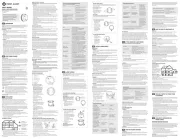
1 September 2025

30 Augustus 2023

30 Augustus 2023

30 Augustus 2023

30 Augustus 2023

30 Augustus 2023

9 Mei 2023

1 Mei 2023

12 April 2023

12 April 2023
Handleiding Niet gecategoriseerd
- MGL Avionics
- EA Elektro Automatik
- Yukon
- Elinchrom
- Jetson
- Russell Hobbs
- Trigano
- EXO
- Rockford Fosgate
- Concept2
- Celestron
- Daewoo
- Krüger&Matz
- Vaillant
- Nokia
Nieuwste handleidingen voor Niet gecategoriseerd
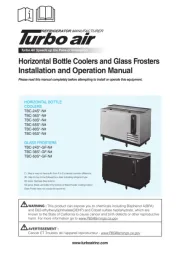
16 September 2025

16 September 2025
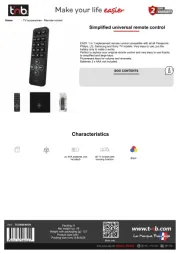
16 September 2025

16 September 2025
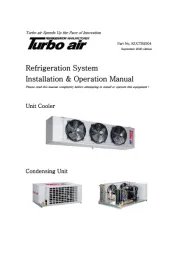
16 September 2025
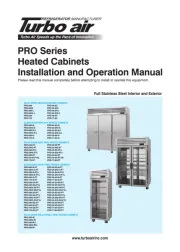
16 September 2025
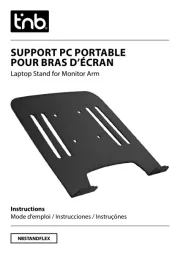
16 September 2025
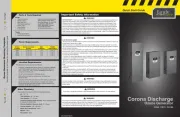
16 September 2025
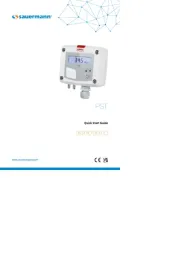
16 September 2025
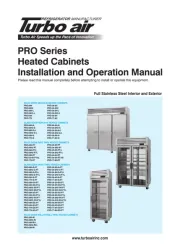
16 September 2025